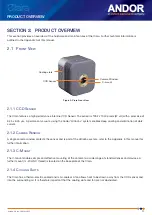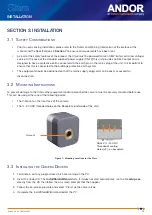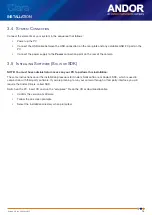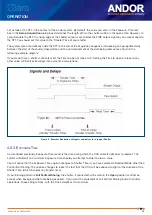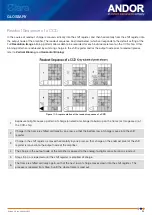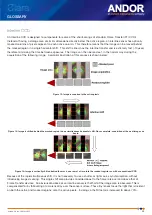
Clara
21
Version 2.0 rev 24 Mar 2015
OPERATION
• In
Permanently OPEN
mode, the shutter will be open before, during and after any data acquisition.
•
Permanently CLOSED
mode can be useful if you want to take a series of acquisitions in darkness and do
not require the shutter to open between acquisitions. You might, for example, wish to capture a sequence of
background values. The shutter remains closed before, during and after any data acquisition.
•
The TTL (Transistor-Transistor Logic) buttons,
TTL Low & TTL High
, let you instruct the system as to how it
should control the opening and closing of the shutter.
-
If you select
TTL Low
, the system will cause the output voltage from the Clara to go ‘low’ to open the
shutter.
-
If you select
TTL High
, the system will cause the output voltage from the Clara to go ‘high’ to open the
shutter.
The documentation supplied by the shutter manufacturer will show whether your shutter opens at a high or a low TTL
level.
NOTE: The shutter pulse is not capable of driving a shutter. It is only a 5V pulse designed to trigger TTL & CMOS
compatible shutter drivers. Also there is no shutter pulse during the Take Signal and Take Reference data
acquisitions.
Figure 8: Using Clara with an External Shutter
4.6.2 t
ime
to
o
pen
oR
C
lose
Shutters take a finite time to open or close and this is sometimes called the
S
hutter
T
ransfer
T
ime (
STT
). The
documentation supplied by the shutter manufacturer should indicate the STT you can expect from your particular
shutter. In the case of a CCD detector, the STT gives enough time for the shutter to open before acquisition starts and
enough time to close after acquisition finishes and before readout commences.





